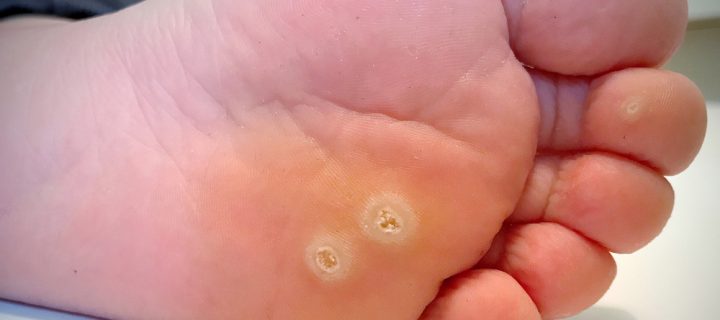The virus that causes warts loves the warmth and wet.
We’re heading into the warm weather months and with it come the joys of a rejuvenating day at the beach and cocktails sipped by the pool. What most people won’t think of when contemplating the advent of summer, however, are warts. But maybe you should! Research shows this season is the heyday for those tiny, unwanted bumps to develop everywhere from your nose to your toes.
Why are you more likely to develop a wart in summer and what can you do about it? The virus that causes warts common foot warts thrives best in warmer weather. You can protect yourself by adhering to the steps outlined at the end of this post and getting your warts treated quickly!
What are warts?
Warts are those rough, grainy skin growths that sometimes appear on your skin. Bumpy and unsightly, most people want to get rid of warts once they develop.
Warts can appear on any area of your body but are most commonly found on your hands, feet, knees, face, and genitals. These small growths are relatively harmless but contagious and can spread through skin-to-skin contact.
Why do you get warts in summer?
Warts love a warm, moist environment, and because of this they’re famous for spreading in locker rooms and water-riddled public shower areas. Summer is the perfect time for these growths to proliferate as you share time (and towels) with friends and family by the pool.
Biting your nails is an easy way to cause warts to appear on your fingers.
What causes warts?
Common warts are caused by the human papillomavirus (HPV). This virus is clever and will sneak into cracks and scrapes in your skin that present a welcoming entry point.
“Warts can actually be spread through casual skin contact or by sharing items,” says Christopher Byrne, PA-C, of Advanced Dermatology P.C in New York.
Related: Rest assured the HPV vaccine is working very well
“Most people have either experienced warts themselves or seen them on others, but don’t always understand how they got there,” Byrne added.
While it seems like everything was fine one day and a wart appeared on your foot the next, the whole process actually takes much longer. It can take anywhere between two and six months for a wart to develop. Once your skin has been exposed to the HPV virus it festers for a long time before breaking out in growth.
How to prevent warts
You can’t stop other people from spreading their own warts but you can do a few simple things to help prevent contracting them. It’s always a good idea to:
- Wash your hands frequently with soap
- Wash and scrub your feet after using a public shower or locker room
- Dry your hands and feet on a clean towel
- Treat your own warts early
Common warts are generally harmless but most people like to get rid of them due to the way they look. Contact a dermatologist to help you treat your warts, if you are concerned. The good news is some warts go away on their own. Others may require freezing also known as cryotherapy or the application of prescription-strength wart medicine. These creams contain salicylic acid and work by peeling away one layer of your wart at a time. Minor surgery and laser treatment can also help remove these pesky bumps.
Looking for a simpler method? While surprising, sometimes duct tape does the trick. Cover your wart in duct tape for a week. Following this, remove the tape and soak the wart in warm water. Scrape away any dead tissue with a pumice stone. Repeat this procedure until the wart disappears.
For more information on battling your warts for smooth summer sailing, click here.
photo credits: Migren art/Shutterstock.com












